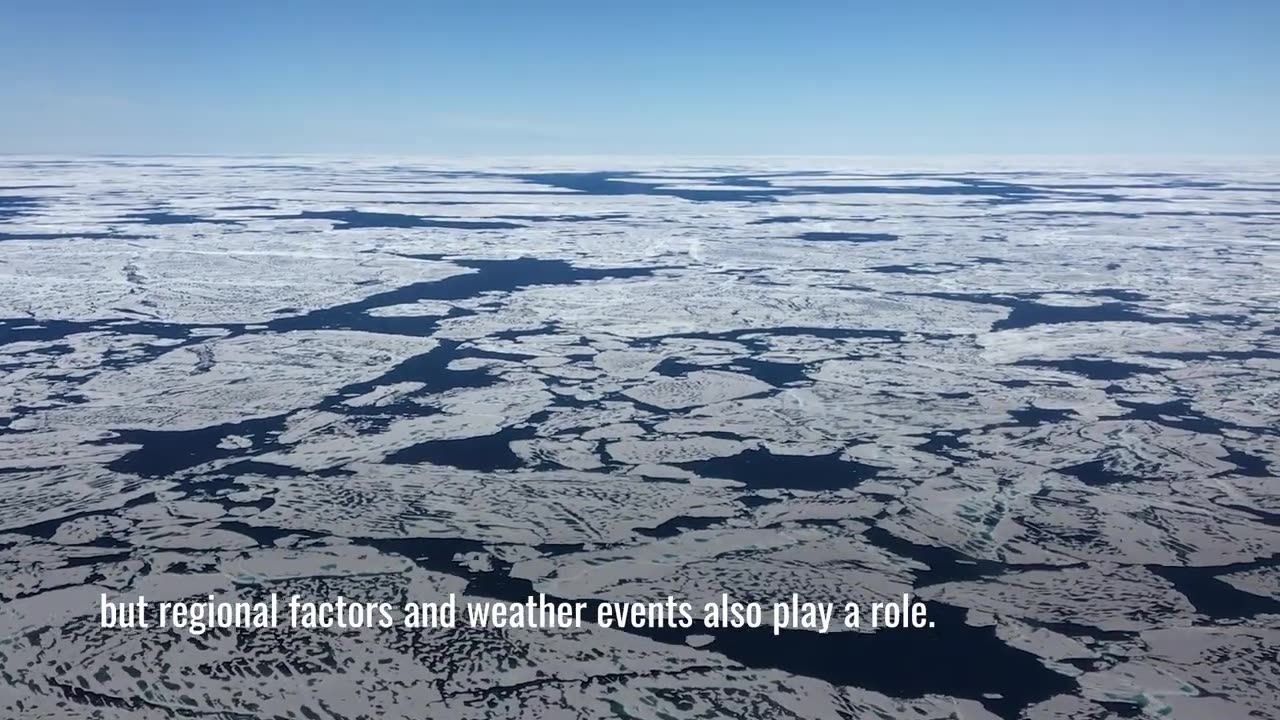Premium Only Content

Arctic Sea Ice Hits 2023 Maximum
On March 6, 2023, the Arctic sea ice pack appeared to reach its maximum extent for this winter, at 14.62 million square kilometers, or 5.64 million square miles, according to the National Snow and Ice Data Center.
Fieldwork and satellites like NASA’s ICESat-2 satellite are monitoring the changing ice pack, and helping to predict how the ice will change in the future.
Sea ice is frozen seawater that floats on the ocean surface. It forms in both the Arctic and the Antarctic in each hemisphere’s winter; it retreats in the summer, but does not completely disappear. This floating ice has a profound influence on the polar environment, influencing ocean circulation, weather, and regional climate.
Since 1979, satellites have provided a consistent continuous record of sea ice. Through 2015, the average monthly September extent of Arctic sea ice has declined by 13.4 percent per decade relative to the average from 1981 to 2010. Declines are occurring in every geographic area, in every month, and every season. Natural variability and rising temperatures linked to global warming appear to have played a role in this decline. The Arctic may be ice-free in summer before the end of this century.On March 6, 2023, the Arctic sea ice pack appeared to reach its maximum extent for this winter, at 14.62 million square kilometers, or 5.64 million square miles, according to the National Snow and Ice Data Center.
Fieldwork and satellites like NASA’s ICESat-2 satellite are monitoring the changing ice pack, and helping to predict how the ice will change in the future.
Sea ice is frozen seawater that floats on the ocean surface. It forms in both the Arctic and the Antarctic in each hemisphere’s winter; it retreats in the summer, but does not completely disappear. This floating ice has a profound influence on the polar environment, influencing ocean circulation, weather, and regional climate.
Since 1979, satellites have provided a consistent continuous record of sea ice. Through 2015, the average monthly September extent of Arctic sea ice has declined by 13.4 percent per decade relative to the average from 1981 to 2010. Declines are occurring in every geographic area, in every month, and every season. Natural variability and rising temperatures linked to global warming appear to have played a role in this decline. The Arctic may be ice-free in summer before the end of this century.
-
 8:10
8:10
WhaddoYouMeme
1 day ago $0.02 earnedChristians, Before You See “Testament”, Watch this!
2.34K3 -
 8:42
8:42
Freedom Frontline
13 hours agoDurbin’s Trump Smear Video Just HUMILIATED Him in the Senate
3.62K -
 10:56
10:56
ariellescarcella
11 hours agoThe Shocking Divide Among College Voters Sparks Worry For America
2.66K5 -
 13:09
13:09
Forrest Galante
9 hours agoWildlife Expert Reacts To Deadly Australian Animal TikToks
47K4 -
 12:08
12:08
Zoufry
1 day agoThe Mystery of Gaddafi's Final 24 Hours
8.67K7 -
 18:25
18:25
Liberty Hangout
13 days agoAnti-Ice Demonstrators Love Poop!
44.4K64 -
 9:39
9:39
MattMorseTV
16 hours ago $1.05 earnedVance just DROPPED a BOMBSHELL.
40.2K63 -
 23:47
23:47
GritsGG
1 day agoThe Forgotten Best Sniper Support AR!
15.5K3 -
 1:15:48
1:15:48
The Pascal Show
17 hours ago $0.10 earnedMUGSHOTS RELEASED! Emmanuel Haro's Parents Mugshot Released To The Public
12.2K1 -
 14:45
14:45
BlabberingCollector
20 hours agoKings Cross Station SET LEAKS! | Harry Potter HBO Show Update & News
11.8K1